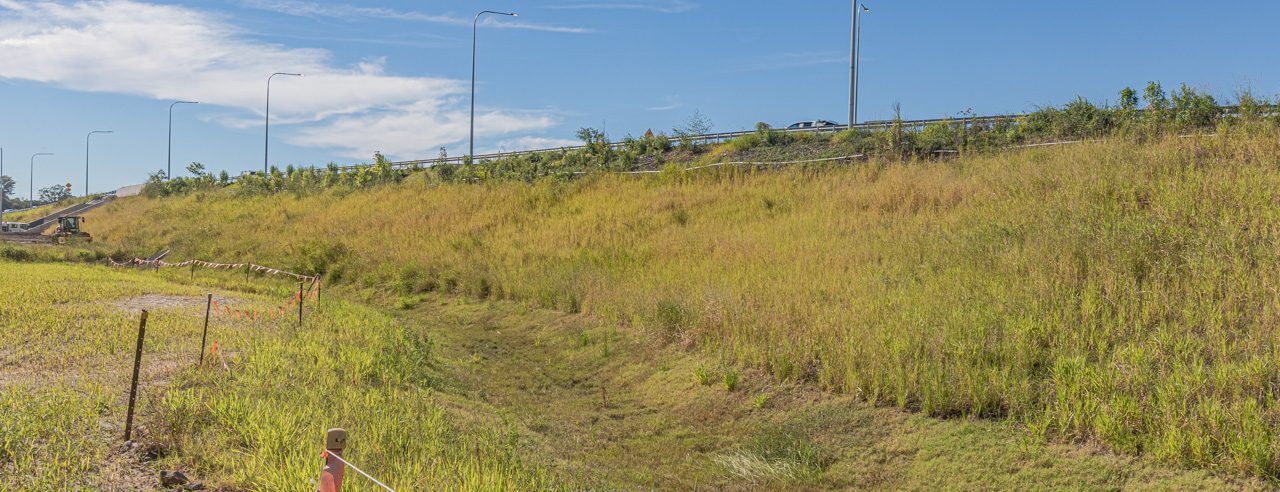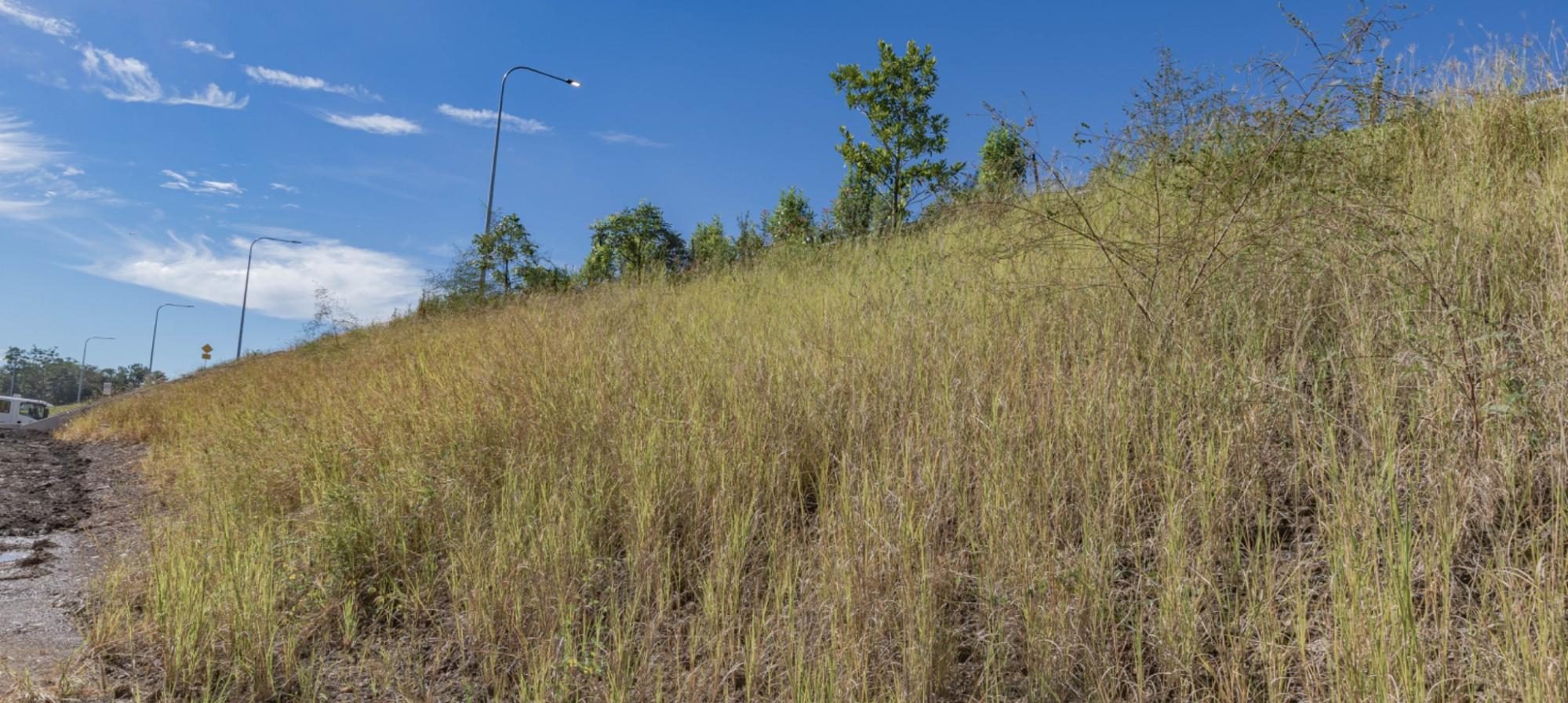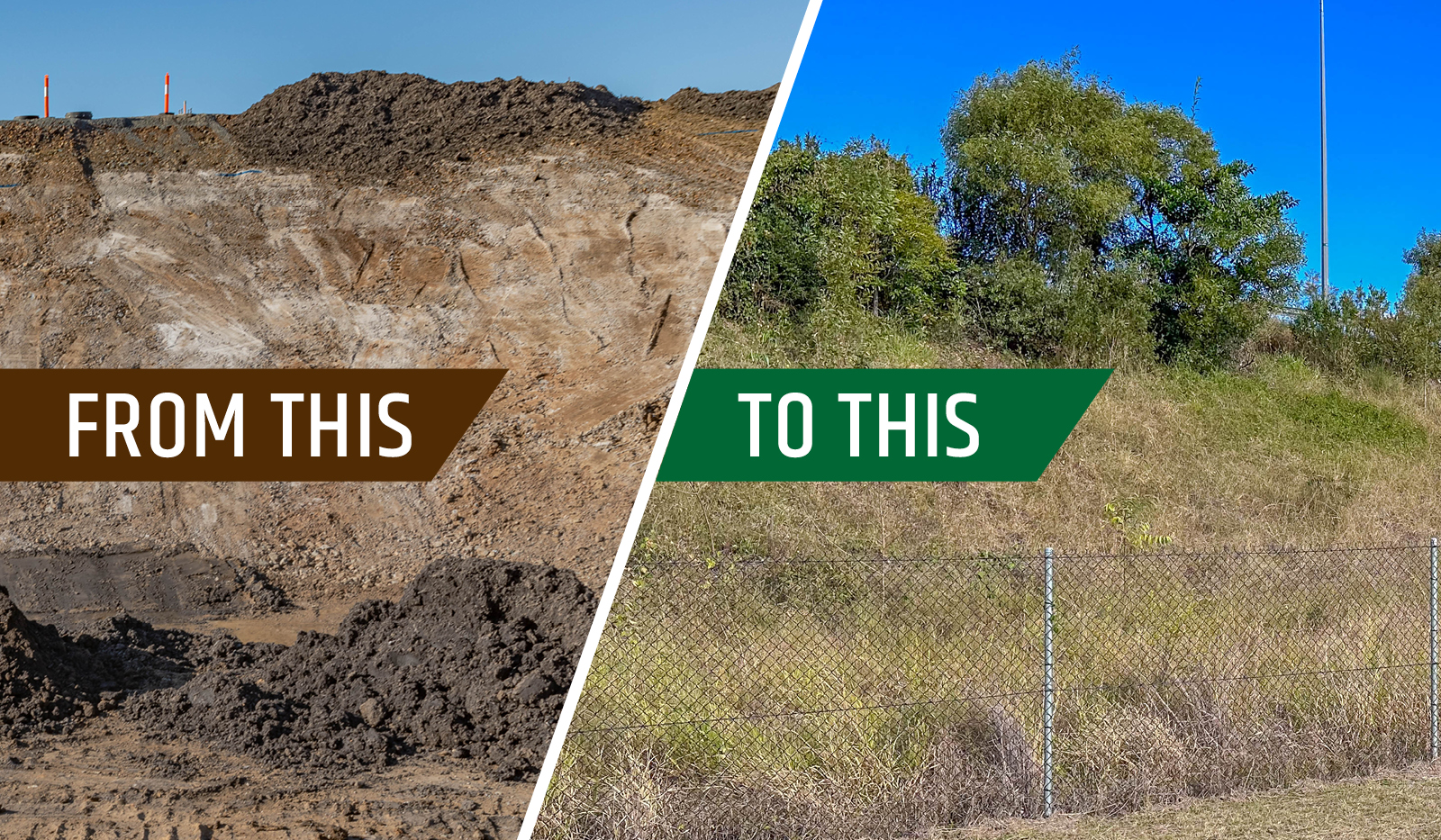
By examining soil test data from our clients’ sites, EnviroStraw’s soil scientists can capture information that demonstrates exactly how beneficial our products are for revegetation and regeneration. In this case study, we’ll examine the soil test data before and after the application of the BioGrowth™ program at the Caloundra turnoff on the M1 Highway on the Sunshine Coast in Queensland.
Sunshine Coast Motorway project – site requirements
The case we are examining for this blog on soil test data is the Sunshine Coast Motorway project. EnviroStraw was invited to assist with this Sunshine Coast motorway project, which involved revegetating a relatively steep, sandstone-based slope near the busy Caloundra exit. This particular case was to be completed without the use of subsoil amelioration, topsoil or compost treatment.
Before EnviroStraw implemented the BioGrowth™ program for this site, the soil had been treated with gypsum at five to six tonnes per hectare. This method had not been effectively incorporated and had been spread very unevenly with an excavator bucket. – As pictured in the image below, this resulted in white patches indicating uneven soil conditioning due to the application process.
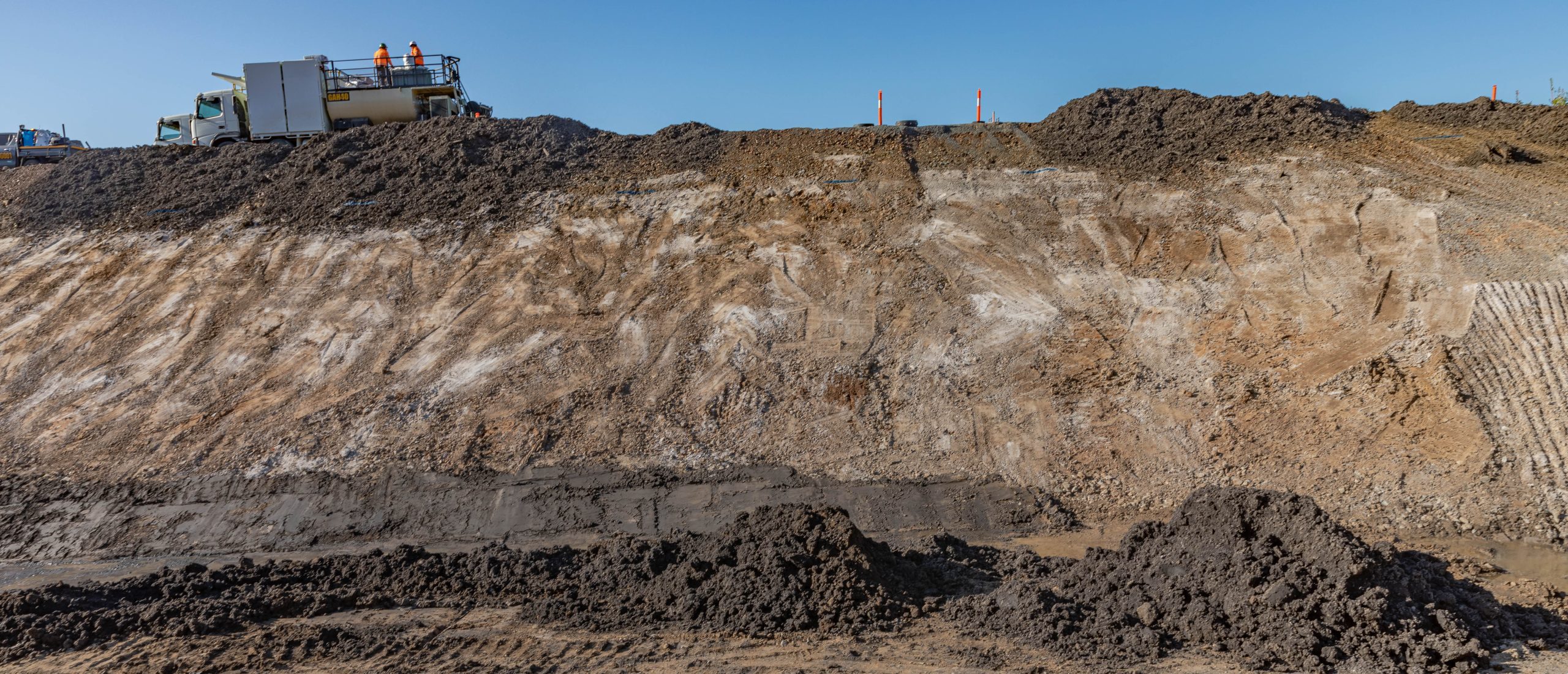
Because of this soil remediation approach, the plants that sprouted showed severe mineral deficiencies induced by the excess calcium mineral release from the gypsum treatment. This process locks up almost all essential trace minerals like iron, copper and manganese. The result of this is shown in the patchy growth shown in the image below.
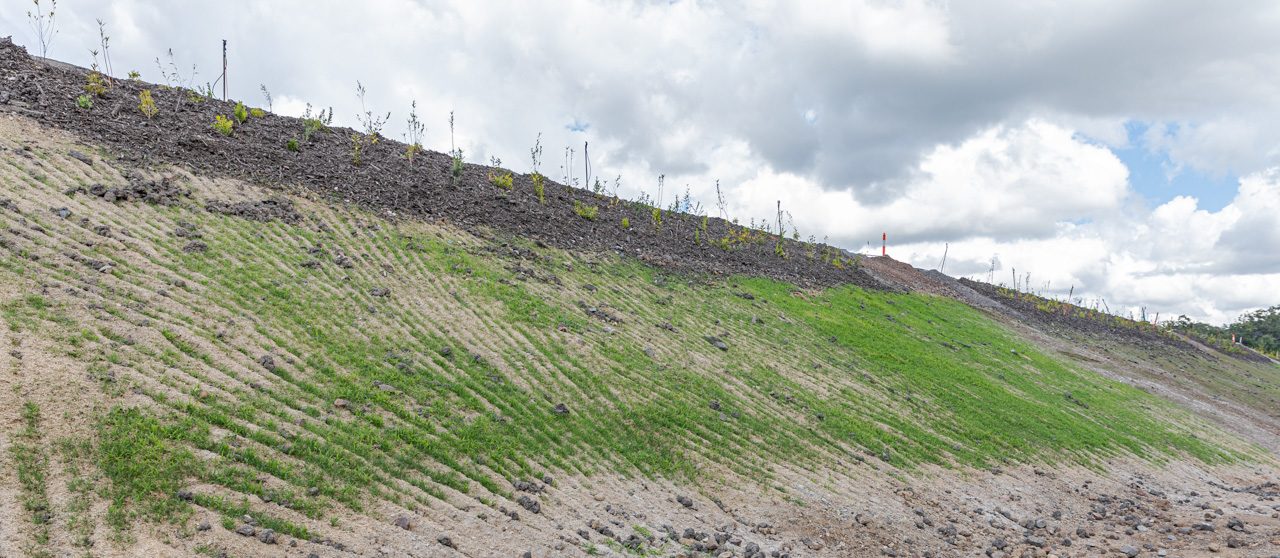
Soil data at inception
The first soil test data recorded by EnviroStraw from the motorway site is reflective of the initial soil amelioration program that had been instigated, hence very high calcium and magnesium mineral levels showing up in the results. It’s worth noting that the estimated soil carbon level was at 10,842g/kg during these initial readings.
During the nine-to-ten month period following the application of EnviroMatrix at ten tonnes per hectare, the site experienced very dry conditions. In classic subtropical fashion, that then changed drastically a few months later, with the site receiving the most rainfall recorded in the region for fifty years.

Soil data four months after application
After the significant levels of rain were received on the site, the plant-available minerals started reducing to more acceptable levels within the soil, and the carbon levels were also improving.

Grass species were introduced to the site and established well – acting as intermediate crops, rebuilding soil fertility and carbon levels. You will notice the regeneration beginning to thrive in the image below.
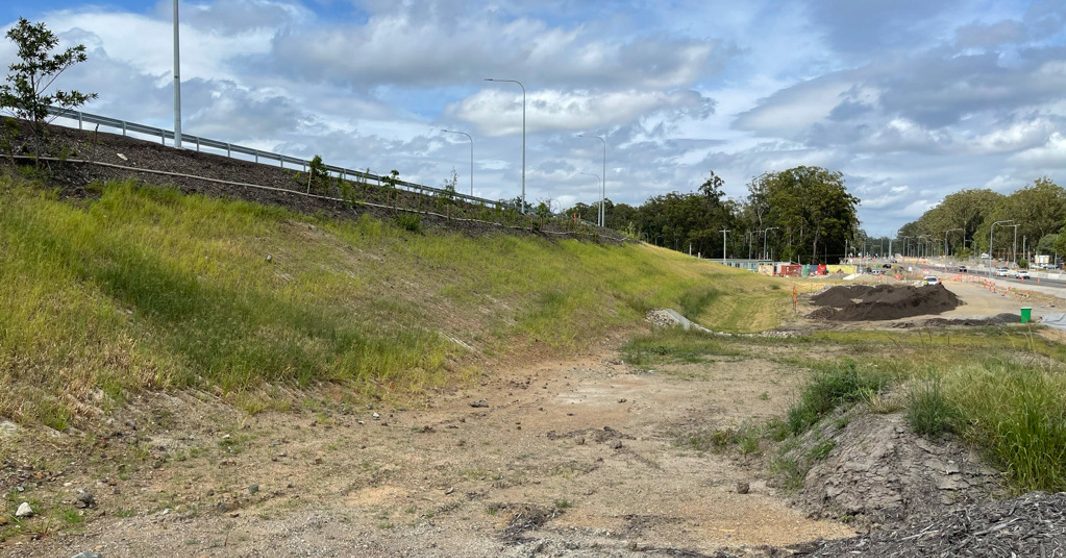
Soil data ten months after application
As recorded in the chart below, the carbon levels continued to improve dramatically at the ten-month mark post-application.

Even with a less than desirable soil-conditioning program applied before the BioGrowth™ program was implemented, the overall ecological system still rebuilt soil carbon to more acceptable levels in a relatively short time-frame. This bar graph data shows how implementing the BioGrowth™ program for site rehabilitation is successful in boosting soil fertility and balancing minerals.

Nearly ten months after application, the BioGrowth™ system was still performing exceptionally well – as pictured in the impressive revegetation on the motorway site below. A wonderful result for the Sunshine Coast community!
